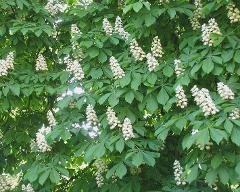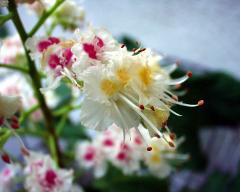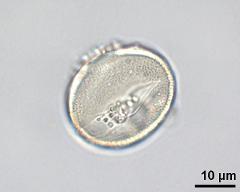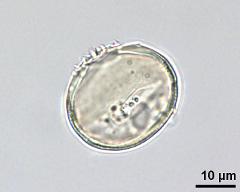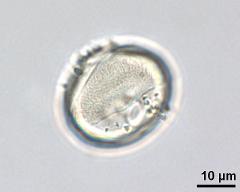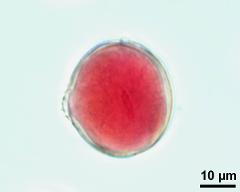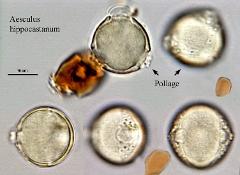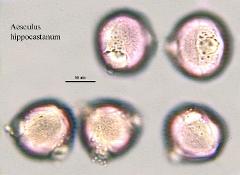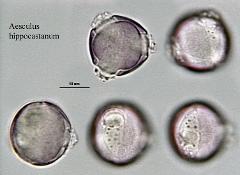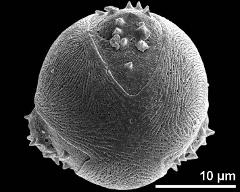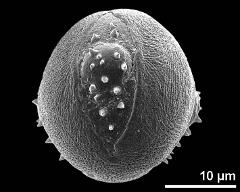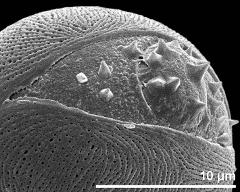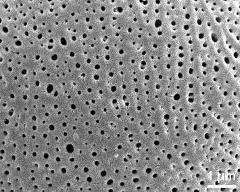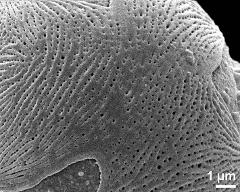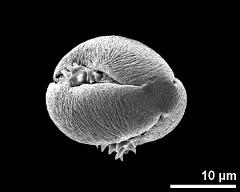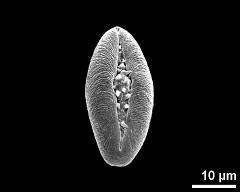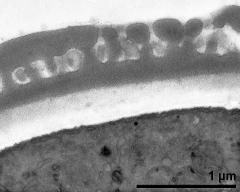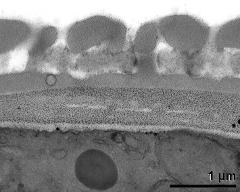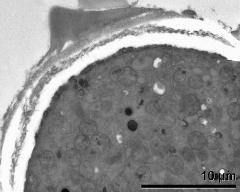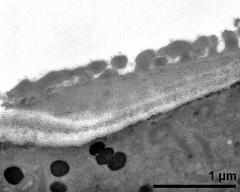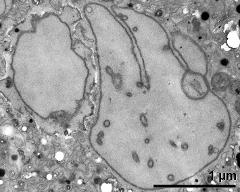Aesculus hippocastanum
Taxonomy: Angiospermae, Sapindales, Sapindaceae, Aesculus
Links: http://flora.nhm-wien.ac.at/Seiten-Arten/Aesculus-hippocastanum.htm
Published: 2020-11-30
Pollen Description
Shape, Size and Aperture
pollen unit: monad, dispersal unit and peculiarities: monad, size (pollen unit): medium-sized (26-50 µm), size of hydrated pollen (LM): 21-25 µm, shortest polar axis in equatorial view (LM): 16-20 µm, longest polar axis in equatorial view (LM): 21-25 µm, shortest diameter in equatorial or polar view (LM): 16-20 µm, longest diameter in equatorial or polar view (LM): 16-20 µm, pollen class: colporate, polarity: isopolar, P/E-ratio: -, shape: spheroidal, outline in polar view: circular, dominant orientation (LM): oblique, P/E-ratio (dry pollen): prolate, shape (dry pollen): -, outline in polar view (dry pollen): lobate, infoldings (dry pollen): aperture(s) sunken, aperture number: 3, aperture type: colporus, aperture condition: tricolporate, colporate, aperture peculiarities: aperture membrane ornamented
Ornamentation and Structure
LM ornamentation LM: striate, rugulate, nexine: -, sexine: -, SEM ornamentation SEM: perforate, striate, suprasculpture SEM: -, TEM tectum: eutectate, infratectum: columellate, foot layer: continuous, endexine: compact-continuous, intine: monolayered, wall peculiarities: -, supratectal element: -
Miscellaneous
pollen coatings: pollenkitt, reserves in cytoplasm: starch, cell number: 2-celled, Ubisch bodies: present
Author(s) of diagnosis: Halbritter, Heidemarie; Sam, Saskia; Heigl, Helmut
Pictures
Picture legend
- flowers of Aesculus hippocastanum, photographer: Sam, S.
- flowers of Aesculus hippocastanum, photographer: Halbritter, H.
- upper focus - fresh, acetolyzed, unstained, photographer: Sam, S.
- optical section - fresh, acetolyzed, unstained, photographer: Sam, S.
- lower focus - fresh, acetolyzed, unstained, photographer: Sam, S.
- pollen grain with generative cell - fresh, unfixed, aceto-carmine, photographer: Sam, S.
- hydrated pollen - fresh, glycerine, unstained, photographer: Heigl, H.
- hydrated pollen - fresh, glycerine, ruthenium red, photographer: Heigl, H.
- hydrated pollen - fresh, glycerine, ruthenium red, photographer: Heigl, H.
- polar view - fresh, DMP & critical point dried, photographer: Halbritter, H.
- equatorial view - fresh, DMP & critical point dried, photographer: Halbritter, H.
- aperture - fresh, DMP & critical point dried, photographer: Halbritter, H.
- exine surface - fresh, DMP & critical point dried, photographer: Halbritter, H.
- detail of polar area - fresh, DMP & critical point dried, photographer: Halbritter, H.
- dry pollen grains - dry, sputter coated with gold, photographer: Halbritter, H.
- slightly oblique polar view of dry pollen grain - dry, sputter coated with gold, photographer: Sam, S.
- dry pollen grain in equatorial view - dry, sputter coated with gold, photographer: Sam, S.
- interapertural area of pollen wall - fresh, glutaraldehyde & osmium & potassium ferrocyanide, modified Thiéry-test, photographer: Sam, S.
- interapertural area of pollen wall - fresh, glutaraldehyde & osmium & potassium ferrocyanide, lipid-test, photographer: Sam, S.
- apertural area of pollen wall - fresh, glutaraldehyde & osmium & potassium ferrocyanide, modified Thiéry-test, photographer: Sam, S.
- pollen wall at transition of aperture and interapertural area - fresh, glutaraldehyde & osmium & potassium ferrocyanide, modified Thiéry-test, photographer: Sam, S.
- generative cell (left) and vegetative nucleus (right) - fresh, glutaraldehyde & osmium & potassium ferrocyanide, modified Thiéry-test, photographer: Sam, S.
Literature
- (1963) The genera of Sapindales in the southeastern United States. J Arn Arb 44: 462-501
- (1984) The Northwest European Pollen Flora 34. Hippocastanaceae. Rev Palaeobot Palynol 42: 111-119
- (1979) Pollen morphology and microsporogenesis in Hippocastanaceae. Diss Abstr Int B 40: 562 pp
- (1958) An atlas of airborne pollen grains. Macmillan & Co Ltd, London I-XVI: 1-112
- (1983) Airborne and allergenic pollen of North America. The John Hopkins Univ Press, Baltimore : 254 pp
- (1965) Pollen grains of Western Himalayan Plants. Asia Monographs, India 1 VIII: 1-102
- (1943) Diagnostic characters of pollen grains. Sci Rep Tôhuku Univ, 4th ser 17: 491-512
- (1963) Contributie la cunoasterea structurii morfologice a microsporilor Hippocastanaceelor si Sapindaceelor din Flora R.P.R. Anal Univ Buc Sér Biol 12: 31-36
- (1994) Exkursionsflora von Österreich : 1180
- (1998) Preparing living pollen material for scanning electron microscopy using 2,2-dimethoxypropane (DMP) and criticalpoint drying. Biotechnic Histochem 73: 137–143
Copyright and Citation
Cite this publication as:
Halbritter H., Sam S., Heigl H. 2020. Aesculus hippocastanum. In: PalDat - A palynological database. https://pc8.botanik.univie.ac.at/pub/Aesculus_hippocastanum/304179;jsessionid=201E285B9AD65FA0D6AC277091A2323E; accessed 2025-01-10

